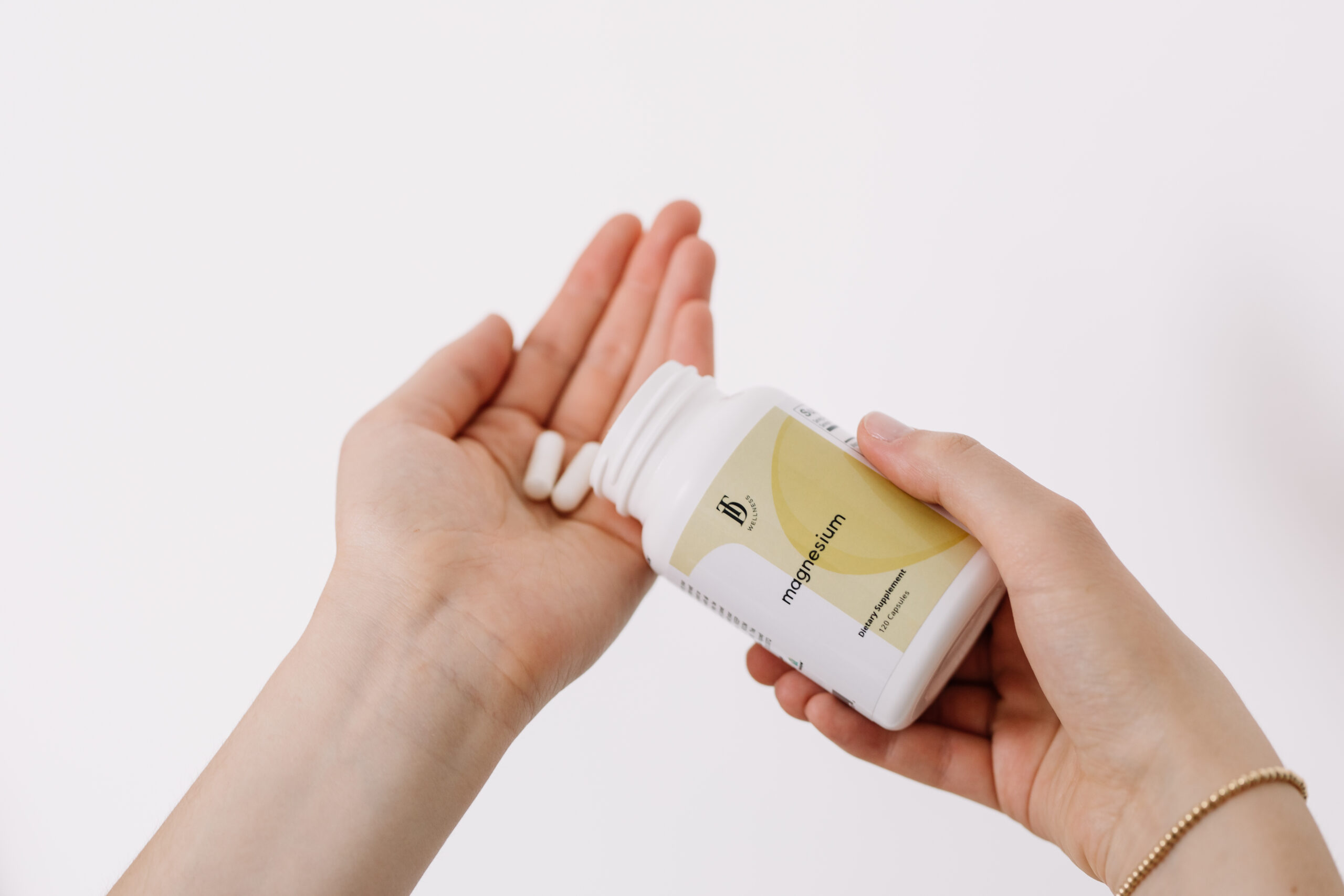Natural Pest Control: Safe, Effective Solutions to Keep Bugs (and Beyond) Out of Your Home
Ants!
You woke up to find a tiny trail through your kitchen, and now you’re stuck…Do you commit to keeping toxic products out of your home, or do you pick up the pesticide product you know will get the job done?
Thankfully, after reading this article, you won’t have to choose.
There is such a thing as non-toxic and effective pest control. And in this article, we’re going to dive into which non-toxic methods work for which particular pests.
First, let’s take a moment to look at what’s really in those toxic pesticide products—and why there’s a better way.
Why It Matters: The Hidden Dangers of Conventional Pest Control
Most conventional pest control products—sprays, foggers, pest killers—contain synthetic chemicals designed to disrupt biological systems. The problem? They don’t just affect bugs.
They also pose real risks to human health, especially for children, pets, and those with chronic health conditions.
Key Health Concerns of Pesticide Exposure
Neurotoxins (Affect the Brain & Nervous System)
- Common in insecticides like organophosphates
- Linked to developmental delays, ADHD, and lowered IQ in kids (source)
Endocrine Disruptors (Hormone Imbalance)
- Found in glyphosate and pyrethroids
- Associated with thyroid issues, infertility, early puberty, and hormone-related cancers (source)
Respiratory Irritants & Indoor Pollution
- Foggers and sprays release VOCs that worsen asthma and allergies
- Indoor use has been linked to increased leukemia risk in children (source)
Carcinogens (Cancer Risk)
- Glyphosate classified as “probably carcinogenic” by the WHO
- Linked to non-Hodgkin lymphoma and kidney/liver damage (source)
In recent news, a Nebraska pediatric cancer study (2025) – Found that combined exposure to multiple pesticides significantly increased rates of childhood leukemia (~23% increase), brain cancer (~36%), and overall pediatric cancers (~30%).
Who’s Most at Risk?
- Children & infants: Due to smaller, more developing systems and frequent floor contact
- Pregnant women: Exposure linked to birth defects and preterm labor
- Pets: Absorb toxins through paws and grooming
- Chronically ill individuals: May experience worsened symptoms or flares
Pesticides Linger Indoors
Even after application, pesticide residues stick around—in your carpets, dust, air ducts, and furniture—leading to long-term exposure through inhalation and skin contact.
Switching to non-toxic methods helps you protect your home without compromising your family’s health.
Let’s explore exactly how to address the pests without the toxins.
Start with Prevention
I cannot stress this enough: Clean Home = Fewer Invaders
Before reaching for repellents, prevention is your first—and often most effective—line of defense. Here’s how to bug-proof your home naturally:
- Seal entry points: Use caulk, weather stripping, and steel wool to block cracks around windows, doors, and pipes.
- Ditch standing water: Mosquitoes and flies lay eggs in or near water. Empty birdbaths, planters, and clogged gutters regularly. Ensure downspouts are working properly and draining efficiently.
- Secure food and trash: Store pantry items in airtight containers and take out the trash frequently. Keep trash bins covered tightly.
- Vacuum regularly: Especially in kitchens and corners, to remove crumbs, eggs, and pheromone trails left by ants, roaches, mice, etc. .
These small changes make a huge impact in keeping pests away.
Natural Repellents That Work (By Pest Type)
I get it—bugs happen!
Ants, mosquitos, mice, or more. Depending on where you live, you’ll likely have to deal with some sort of critter at some point in your life.
But that doesn’t mean you have to turn to harsh chemicals. Here’s what does work—using ingredients you probably already have or can easily find.
Ants
- Essential Oil + Water: Mix 10–15 peppermint essential oil drops with water in a glass spray bottle. Spray entry points and baseboards.
- White Vinegar Solution: 50/50 vinegar and water disrupts their scent trails. Wipe down countertops and floors.
- Citrus or Cucumber Peels: Ants dislike the acidity—place peels near windowsills or entryways.
- Cinnamon-Spice: Sprinkle a mixture of cinnamon, cayenne pepper, and diatomaceous earth, along entry points and known trails.
- Bonus – Tip: Ants often nest in moist areas, so fix leaky pipes or faucets.
Bees, Wasps & Hornets
- Decoy: Hang decoy wasp nests (they’re territorial) around entry points and outdoor seating areas.
- Nest Knock-Down: Regularly inspect and knock down early-stage nests in spring using a long pole or water spray—do this in the evening when insects are less active.
- Plant Repellents: Plant deterrent herbs like mint, eucalyptus, citronella, and lemongrass near windows, doors, and patios. These can confuse and repel stinging insects without harming them.
- Bonus – If Stung: For non-allergic reactions, apply a cold compress and a paste of baking soda and water or a dab of raw honey to soothe pain and swelling. Take an anti-inflammatory supplement if needed. Seek medical help immediately if there’s any sign of an allergic reaction (trouble breathing, swelling of the face or throat, dizziness).
Cockroaches
- Diatomaceous Earth (Food-Grade Only!): Sprinkle along baseboards, behind appliances, and under sinks. It dehydrates insects but is safe for people and pets.
- Bay Leaves: Place in pantry corners or drawers—roaches dislike the scent.
- Soapy Water Spray: Mix water with a few drops of castile soap. It suffocates roaches on contact.
Flies
-
- Plant Deterrents: Use fly-repelling herbs and plants like basil, lavender, mint, or bay leaves near entry points.
- Essential Oil Solutions: Mix 10–15 essential oil drops (eucalyptus, lemongrass, or peppermint) with water in a glass spray bottle. Can be used around windows and doors.
- Traps & Barriers: DIY traps with apple cider vinegar and a drop of dish soap in a jar work well. Hang fly paper strips or install fans near entryways—flies struggle in strong air currents.
- Citrus Clove Deterrent: Stick whole cloves into halved lemons or oranges and place them near windows or outdoor eating areas. The scent repels flies naturally.
- DIY Bottle Trap: Cut a plastic bottle in half, invert the top into the bottom to create a funnel, and fill with a mixture of water, sugar, and a splash of vinegar. Flies enter but can’t escape.
Fleas & Ticks
-
- Flea Light Trap: Place a shallow dish of soapy water under a nightlight or desk lamp near where fleas are active. The light attracts fleas, and they drown in the water.
- Herbal Sachets: Make small fabric sachets filled with dried lavender, rosemary, or pennyroyal and place them in pet bedding, under cushions, or in closets to help repel fleas naturally.
- Wondercide natural + non-toxic flea and tick spray
- The Wholistic Family Tick Kit
Ticks are a serious matter—they can carry Lyme and other diseases. Which is why we suggest the Wholistic Family Tick Kit:
- Formulated with clean, non-toxic ingredients
- Designed by a fellow holistic mom (so you know it’s kid-safe and mom-tested)
- Small enough to throw in your purse, backpack, or diaper bag
Mice
- Peppermint Oil on Cotton Balls: Place where droppings or gnaw marks are found.
- Steel Wool or Copper Mesh: Stuff into gaps, holes, or under sinks—mice can’t chew through.
- Ultrasonic Repellents: Plug into outlets to emit frequencies mice hate (but we can’t hear).
Mosquitoes
-
- Citronella Candles: A classic for outdoor gatherings. Look for soy or beeswax-based ones with clean ingredients.
- Lemon Eucalyptus Oil Spray: Combine these two essential oils with witch hazel or vodka for a DIY mosquito spray.
- Remove Standing Water: Even a bottle cap can breed hundreds of mosquitoes. Drain flowerpots, toys, and gutters often.
- Primally Pure Nature Spray: Our choice for bug repellent spray that is both effective and non-toxic. Use code TAYLORDUKES.
Spiders
- Essential Oil Diffusing: Diffuse peppermint or cedarwood essential oils in corners or spray diluted versions along baseboards.
- Chestnuts or Lemon Peels: Place in known spider areas—closets, basements, window sills.
Tools to Keep On Hand
Want to be ready at a moment’s notice? Build your Non-Toxic Pest Control Cabinet with these essentials:
- Spray bottles: Glass is best for essential oils
- Essential oils: Peppermint, cedarwood, citronella, lemon eucalyptus
- Diatomaceous earth: Make sure it’s food-grade
- Airtight glass or BPA-free containers: For pantry items
- Steel wool, caulk, and copper mesh: To block access points
- Natural candles: With real citronella or lemongrass essential oils
You don’t need a dozen products—just a few versatile tools that go a long way.
Empowerment Over Fear
You don’t have to choose between a pest-free home and a toxin-free home. With a little know-how and a few natural tools, you can reclaim your space and protect your family’s health.
Start small. Maybe it’s peppermint oil for ants or sealing that gap under the sink. Every choice adds up.
Let’s kick the toxins and bugs to the curb—naturally.
Share This Post:
Your Wellness Deep Dive
- Be the first to learn about new healthy living resources, blog posts, and exclusive TDW offerings by getting on my insider list.
- Find healthy living products with ingredients you can trust – the same ones I personally use for myself and my family – in the TDW Shop. Check out our protein powders, electrolytes, supplements, and more!
- Get personalized support through the TDW Community. When you become a member, you get access to functional medicine expertise from me and my team, functional medicine lab testing and 1:1 consults, a digital library of exclusive wellness content, live monthly Q&As with me, and so much more!
YOU MAY ALSO LIKE:
Helping you get your gut right, improve energy, boost immunity, balance hormones, sleep better and look + feel your best
DISCLAIMER
PRIVACY POLICY
TERMS + CONDITIONS
ACCESSIBILITY
© 2025 Taylor Dukes Wellness
LEARN
SHOP
ABOUT
TDW Community
Free Guides
Blog
TDW Store
Fullscript
About Taylor
Press
Contact
COOKIE POLICY
SITE CREDIT
Trusted Products



